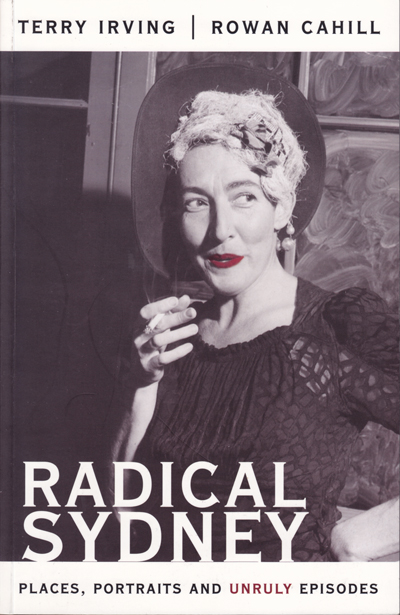Radical Sydney
Book Review by Desmond Moore
By Terry Irving and Rowan Cahill UNSW Press RRP $39.95
History teachers will welcome this long overdue book. Both Melbourne and Brisbane have had their radical histories that deliver a people's political history - Sydney now has its own, from the challenges to the ruling class from Lieutenant William Dawes's disgust with Governor Phillip's armed excursions against local Aborigines to the 1998 MUA picketing against Patrick's attempts to de-unionise the Australian waterfront.
The authors follow a simple but effective formula. For each of their 47 chapters (which are short enough to be read in a single period), they give the location of the event, a background to the event and an outline of the actions that took place. If the location of the event has been altered by Sydney's ongoing process where "the present annihilates the past", then the authors have also reconstructed the sites of the political struggles.
 History teachers in particular should find this both useful and interesting. It means we can diversify school excursions to examine how a site has changed over time and, even more importantly, it will make the excursions more interesting because students' interest in history thrives on conflict. Most textbooks only pay lip service to conflicts in Australian history (usually conflict with Aborigines, the Rum Rebellion, the Eureka Stockade and green bans).
History teachers in particular should find this both useful and interesting. It means we can diversify school excursions to examine how a site has changed over time and, even more importantly, it will make the excursions more interesting because students' interest in history thrives on conflict. Most textbooks only pay lip service to conflicts in Australian history (usually conflict with Aborigines, the Rum Rebellion, the Eureka Stockade and green bans).
Now we have many more conflicts in Australian history to enliven our lessons, whether they are concerned with the siege of Union Street in Erskineville during the Depression or the draftdodging escapades of Michael Matteson in the 1970s.
The early history of political surveillance that began during World War I is dealt with in chapter 20. The authors look at Rawson Place (near Central railway station), which was a popular meeting and organising area for leftwing militants in the 1920s.
I am old enough to remember the six o'clock swill when hotels closed at six. This book explains how it came about in 1916 as a reaction to a military mutiny at Liverpool. Many of these soldiers moved on to Sydney but the mutiny only lasted 24 hours. To a large degree it was alcohol-fuelled, even though the soldiers did have some serious grievances, hence the introduction of restrictions on the sales of liquor – which continued until 1955.
There was an increase in militancy in the 1920s as Australia's war-induced economic buoyancy waned. The year 1921 saw many of the unemployed attack police blocking their attempt to present their demands to Jack Lang, the NSW treasurer. One of the reactions to this was the creation of the King and Empire Alliance, a secret paramilitary organisation of businessmen and former World War I officers, led by Major-General Sir Charles Rosenthal, which aimed to attack Bolsheviks and Sinn Feiners if they attempted to stage revolution.
I, like many other teachers, have found the 1920s a period in which it is hard to kindle the interest of students. None of the school textbooks I have used have ever gone into the political tensions of this period. This book again has the ability to spice up once lacklustre period of our history teaching.
Of course we all know that secret pro-fascist armies returned in the turbulent times of the Depression of the 1930s. However, I wonder how many knew that one member of the New Guard's General Council was a Captain James R. Patrick, owner of Patrick & Company - the same firm that precipitated a four-month Maritime Union of Australia dispute by trying to bring non-union wharfies and balaclava-clad, club-wielding guards onto the Australian waterfront industry?
One weakness of this book is its lack of footnotes. This is most clear in chapter 45, which has a detailed description of a brutal, thuggish police bashing of one of the participants in the first gay and lesbian demonstration in June 1978 (a forerunner of the annual Mardi Gras). However, the strengths greatly outnumber this weakness and there is an extensive reading list to help overcome this.
Both the authors are labour history academics and Rowan Cahill has been a secondary school history teacher for a number of years. The sub-title of Radical Sydney is "places, portraits and unruly episodes" – and this is exactly what we get with this book. Copies of Radical Sydney should be in the Australian history section of every library and no history teacher should be without their own personal copy.
Notes
Many thanks to Desmond Moore for permission to add this review to the Union Songs website.
It was first published in August 2010 in 'Education' the journal of the NSW Teachers' Federation.